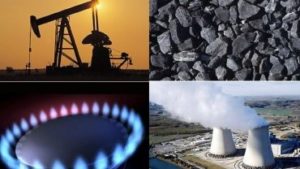 Herculean global action to roll back the economic carnage of the coronavirus is about to bump into a new problem: climate change.
Herculean global action to roll back the economic carnage of the coronavirus is about to bump into a new problem: climate change.
With as much as $15 trillion in economic stimulus on offer – an unfathomable 17% of global GDP – we’ll see spending on a scale that will affect the earth’s climate no matter what.
Most of the spending is being raised in China, the European Union and the United States, the big three global emitters. We don’t yet know whether the dominant climate effect will be positive or, as signs are pointing, negative.
We’re still within the tipping point. We can unleash stimuli to slow the accumulations of planet-warming greenhouse gases in the atmosphere, or to hasten those accumulations.
The IMF and the International Energy Agency have published a timely recovery road map to begin the clean-up of the global energy system. But plans like these must get past an insidious force that’s equal parts vague and impregnable.
That force is “path dependence.” It’s the ultimate rope-a-dope for good intentions, absorbing efforts at change until the crusading forces exhaust themselves.
Path dependence is akin to inertia. It says that investments made in the past are what drives outcomes today, not current thinking. Historic decisions hold sway long after their implementers are gone.
Path dependence is the force that keeps us flipping on our incandescent porch lights, driving to the supermarket, and burning natural gas to heat our homes and swimming pools even though we know it hurts the climate.
Sub-optimal technologies like these, or like the inefficient QWERTY keyboard, dominate far longer than they should. That’s because it’s easier to keep them and their supporting infrastructure than to replace them with something better.
At the society level, path dependence keeps us tethered to power lines from the coal-fired electricity plant, which is connected by rail to the mine, which is staffed by miners digging coal to feed their families.
These well-worn paths were set in place more than a century ago, which makes them tough to discard. Their costs are sunk. They still function well. Replacing them is expensive.
At the global scale, the virility of path dependence is starkly manifested in the latest BP Statistical Review of World Energy. The report shows that, despite the Paris Agreement and all the other calls to action since the Kyoto protocol in 1992, carbon emissions were still rising in 2019.
Humans’ burning of oil, gas and coal sent 34 billion tonnes of carbon into the atmosphere last year. That’s a half-percent more than we sent into the skies in 2018, which was a big year for carbon.
Emissions, until coronavirus, were going up despite steadily rising alarm about climate change. Pew surveysshow 68% of respondents around the world believed that climate change was a major threat to their country in 2018. (Fig. 1) That was up from 63% in 2017 and 56% in 2013.
It’s not that people don’t care. It’s that the forces arrayed against action – established interests and their political allies, along with disinformation – have path dependence on their side.
That’s why the coronavirus’ call to action has captured our imaginations. If COVID-19 can spur humanity to take collective action, can it also shove us off our rutted path to a hotter planet?
The recovery packages being proposed in the big three economies – responsible for 52% of current emissions – are so big that, one way or another, they will affect the climate. China accounts for 27% of current global carbon emissions, the United States 15% and the EU 10%.
But China, which already consumes more than half the world’s coal, appears to be rekindling its economy in part by funding 206 gigawatts of new coal-fired power plants. That’s almost as much coal-fired capacity as that in the United States. Operating for a normal 40-year lifespan, those plants could add another 35 billion tonnes of carbon to the atmosphere, as much as the entire world produced last year.
America’s initial stimulus payments provided a “stealth bailout” for the politically connected oil and gas industry while showering less kindness on the clean energy sector, which lost hundreds of thousands of jobs and now faces permanent damage.
House Democrats and Senate Republicans are wrangling over a longer-term recovery package that combines tax cuts and infrastructure spending. The House proposes nearly $500 billion in traditional highway improvements – or even more, if President Trump gets his wish – along with $75 billion in clean energy. With interest rates so low, borrowing to spend big makes sense.
Problem is, these and other emerging packages skew heavily toward fossil fuels. Of the $9 trillion to $15 trillion in announced economic stimulus globally, only $150 billion – around 1% – can be said to be supportive of a transition toward cleaner energy, according to a useful database developed by Carbon Brief, a climate-focused website.
Source: “Can Coronavirus Stimulus Get Us Off Fossil Fuels? Not If Path Dependence Has A Say” Forbes
